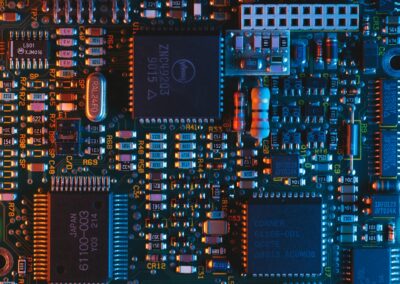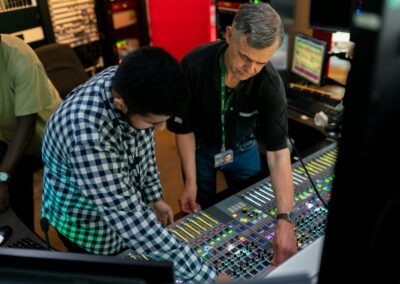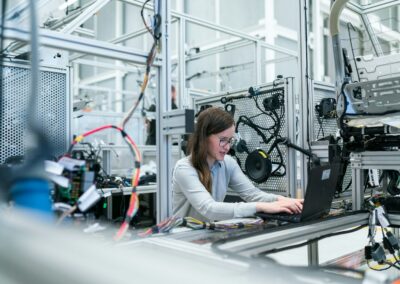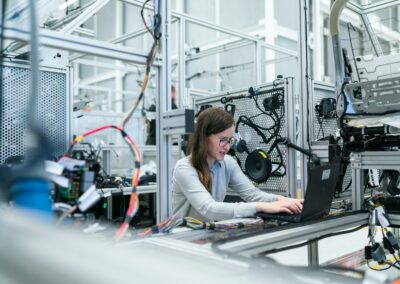Challenges in Adopting Digital Twin Technology for Urban Infrastructure
Integrating digital twin technology into urban infrastructure presents a series of complex challenges that must be addressed to fully leverage its potential. Digital twins, which are digital replicas of physical systems, offer unprecedented opportunities for managing and optimizing urban environments. However, the adoption of this technology in existing urban infrastructure involves overcoming several significant hurdles.
One of the primary challenges is the integration of digital twin technology with existing urban systems and data sources. Urban infrastructure, such as transportation networks, utilities, and public services, often relies on outdated technology and disparate data sources. This fragmentation can create difficulties in creating a cohesive digital twin that accurately reflects the real-world infrastructure. Additionally, the existing data collected from urban infrastructure may be inconsistent or incomplete, complicating the development of accurate digital twins.
Another challenge is the complexity of managing large-scale data and ensuring its security. Digital twins require extensive data to function effectively, including real-time information on infrastructure performance, environmental conditions, and usage patterns. Managing and processing this data in real time can strain existing IT systems and raise concerns about data security and privacy. Urban areas, especially those in rapidly growing regions like Saudi Arabia and the UAE, face heightened risks of data breaches and cyberattacks, necessitating robust security measures.
Addressing Integration with Existing Systems
To tackle the challenge of integrating digital twin technology with existing urban infrastructure, a phased and strategic approach is essential. One effective strategy is to conduct a thorough assessment of current urban systems and identify key areas for digital twin implementation. Prioritizing areas with the highest impact, such as critical infrastructure or high-traffic zones, can help demonstrate the value of digital twins and build momentum for broader adoption.
Developing interoperable solutions that can bridge the gap between old and new technologies is another crucial step. Middleware solutions and APIs can facilitate communication between legacy systems and digital twin platforms, enabling the integration of disparate data sources into a unified digital twin model. Custom integration solutions tailored to specific urban infrastructure needs can also enhance compatibility and data accuracy.
Moreover, engaging with technology partners and consultants specializing in smart city solutions can provide valuable expertise and support. These experts can assist in developing and implementing integration plans, addressing compatibility issues, and ensuring that digital twin technology aligns with the unique requirements of urban infrastructure.
Managing Data Complexity and Ensuring Security
Managing the complexity of data required for digital twins and ensuring its security are critical aspects of successful integration. One approach is to invest in advanced data management and analytics platforms that can handle large volumes of real-time data. These platforms can provide the necessary infrastructure for processing and analyzing data, enabling effective digital twin operations.
Implementing robust data security measures is also essential. This includes adopting encryption technologies, access controls, and regular security audits to protect sensitive data from breaches and cyber threats. Ensuring compliance with data protection regulations and best practices can further safeguard urban infrastructure data and maintain public trust.
Additionally, leveraging cloud-based solutions for data storage and processing can offer scalability and flexibility in managing the vast amounts of data generated by digital twins. Cloud platforms can provide the necessary computational power and storage capacity to support real-time data processing and analytics, while also offering enhanced security features.
Solutions for Successful Integration of Digital Twins
To successfully integrate digital twin technology into urban infrastructure, several key solutions and strategies can be employed. These solutions address the challenges of system integration, data management, and security, paving the way for effective implementation and optimization.
One solution is to implement pilot projects that demonstrate the benefits of digital twins in specific urban areas. Pilot projects can provide valuable insights into the practical challenges and benefits of digital twin technology, helping to build stakeholder confidence and support for broader adoption. By showcasing successful implementations, pilot projects can serve as models for future digital twin integrations.
Another strategy is to foster collaboration between public and private sector stakeholders. Collaboration can facilitate knowledge sharing, resource pooling, and the development of innovative solutions tailored to urban infrastructure needs. Public-private partnerships can also help secure funding and support for digital twin initiatives, accelerating the adoption of this technology in urban environments.
Investing in training and capacity building for urban planners, engineers, and IT professionals is also crucial. Ensuring that personnel have the necessary skills and knowledge to operate and manage digital twin technology can enhance its effectiveness and sustainability. Training programs and workshops can equip staff with the expertise needed to leverage digital twins for improved urban management and decision-making.
Looking Ahead: The Future of Urban Infrastructure
In conclusion, integrating digital twin technology into urban infrastructure presents both challenges and opportunities. By addressing issues related to system compatibility, data management, and security, and by employing strategic solutions such as pilot projects, collaboration, and training, cities can unlock the full potential of digital twins.
As urban areas in Saudi Arabia, the UAE, Riyadh, and Dubai continue to grow and evolve, the adoption of digital twin technology will be key to creating more efficient, resilient, and sustainable urban environments. Embracing this technology can drive innovation in urban management and support the development of smart cities that are better equipped to meet the needs of their residents.
—
#DigitalTwinTechnology #UrbanInfrastructure #IntegrationChallenges #SmartCities #SaudiArabia #UAE #Riyadh #Dubai #ArtificialIntelligence #Blockchain #TheMetaverse #ExecutiveCoaching #GenerativeAI #ModernTechnology #BusinessSuccess #LeadershipSkills #ProjectManagement























